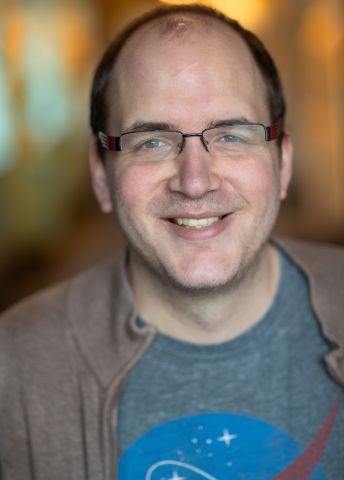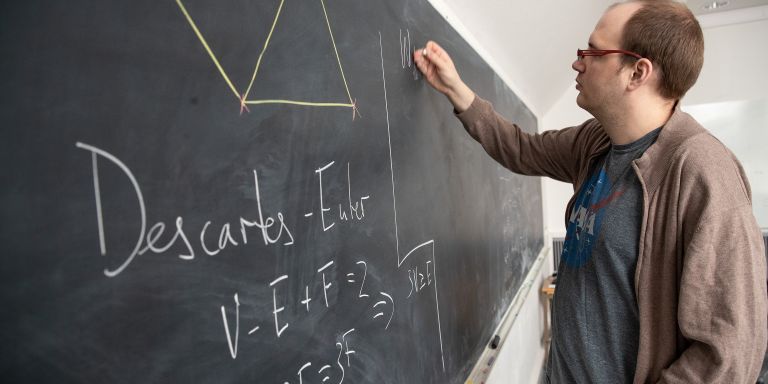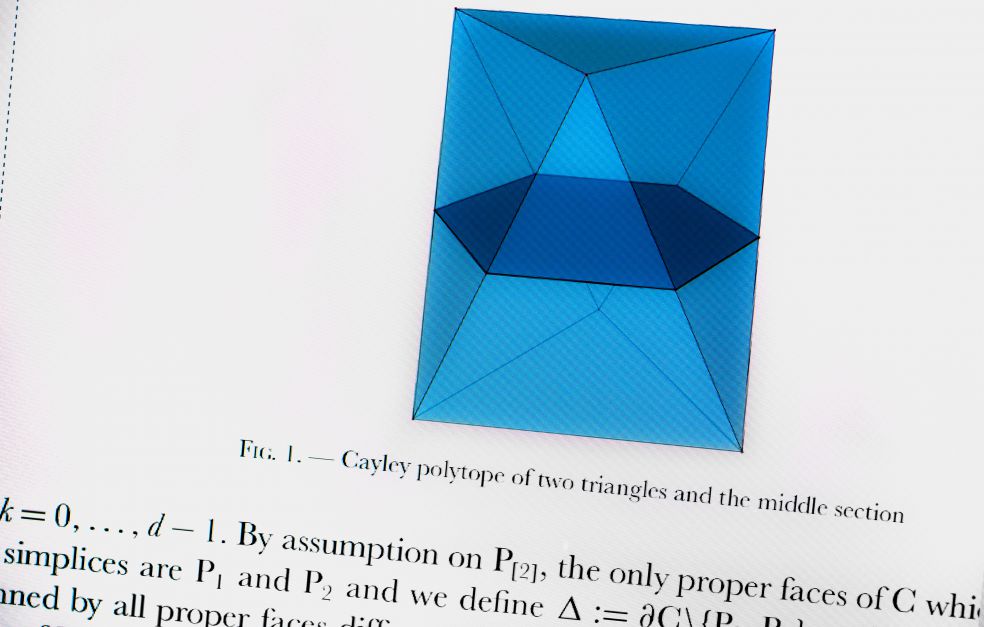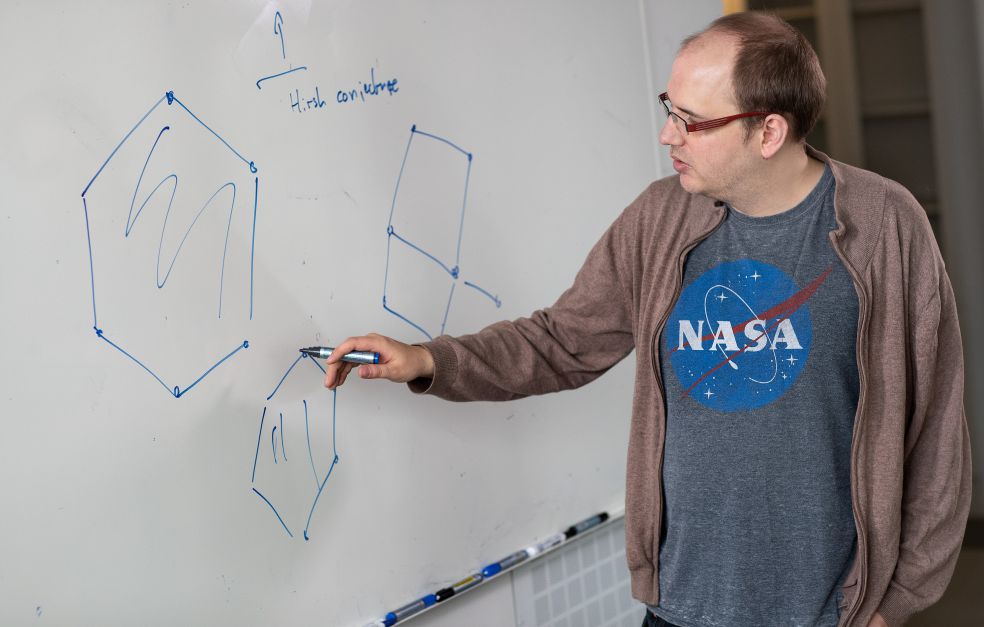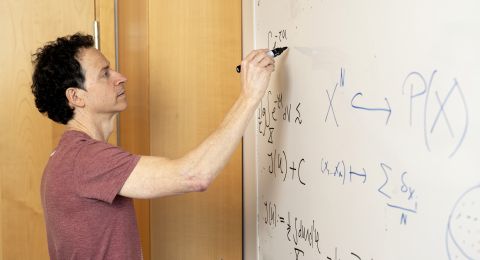Mathematics plays a key role in many functions in society. When we use social media, travel on the subway or pay a bill using a mobile banking app, advanced mathematical models are running constantly in the background. And sometimes mathematical problems that are centuries old inspire researchers to find creative solutions to the challenges of the modern age.
Karim Adiprasito
Professor of Mathematics
Wallenberg Academy Fellow 2017
Institution:
KTH Royal Institute of Technology
Research field:
Combinatorics; currently combinatorial manifolds and surfaces, topology and algebra of subspace arrangements, section theorem in its numerous guises, Hodge theory and Lefschetz theorems, modular spaces in combinatorial objects (such as polytopes).
Invisible mathematics characterizes modern society. We are usually not aware that mathematics is there. But there are exceptions of course, and mathematics professor Karim Adiprasito is one of them. He sees mathematics in daily life, in increasingly complex big-city traffic systems, or in networks linking computers across the world.
When he was a boy back in the Ruhr valley in Germany, the future jobs he dreamt of were quite different. One idea was to be a reporter, another a chef. But one day he came across his grandfather’s old textbooks from his engineering studies. He dusted them off and fell under their spell.
“It was my portal into the world of mathematics – a happy accident.”
Tough nuts to crack
Having been chosen as a Wallenberg Academy Fellow, Adiprasito has recently transferred his research from the Hebrew University of Jerusalem to KTH Royal Institute of Technology in Stockholm. He is keen to get his teeth into a number of mathematical problems, particularly those that are of theoretical interest.
“I like studying problems that are so difficult that other people do their best to avoid them – problems that loom large like blocks of concrete in the middle of the highway.”
Now he will be able to invite researchers from all over the world to seminars and discussions at KTH. Mathematical researchers tend to be lone wolves, but collaboration is essential to success.
“No single university can achieve pre-eminence in modern mathematics on its own,” he says.
“I’m very proud to join this community of young, pre-eminent researchers. Hopefully, I’ll be able to contribute scientific findings that will be internationally recognized over the next few years.”
After intense dialogue with his colleagues, Adiprasito prefers to digest his impressions on his own, perhaps by taking a walk in the woods close to KTH.
“Sometimes students come looking for me when I’m out taking a stroll in the woods. I like to be surrounded by nature, and I can think more clearly during the physical exertion involved in walking. Each to their own, I suppose.”
Uniting three key areas
Adiprasito’s research brings together three key areas of mathematics: combinatorics, geometry, and algebra. He is attempting to find deeper relationships between these three fields. He is using new methods to obtain unexpected perspectives. This will improve theoretical understanding, but the research may also yield new applications, not least in industry.
One example is the relationship between what mathematicians call “discrete” and “continuous” objects. “Discrete” refers to whole number mathematics, in contrast to mathematics dealing with continuously varying quantities.
Certain physical phenomena can be studied both as discrete and as continuous objects. One example is the properties of water. The behavior of wave particles can be seen as a continuous flow of water instead of a collection of individual molecules.
“This may turn out to be important in various contexts, for instance when you want to build a hydropower plant or use wave power out to sea.”
Earlier research has shown exploration of continuous objects using tools from discrete mathematics to be a fruitful line of inquiry. But methods will have to be developed to study discrete objects and ascertain how they behave like continuous ones.
A 200-year-old riddle solved
Adiprasito is happy to gain inspiration from history in order to make progress. His search for new methods saw a breakthrough when he solved a problem that had perplexed mathematicians for over 200 years. He did so using partial differential equations, which are otherwise mainly used to describe continuous phenomena.
In his doctoral thesis, published in 2013, he described one of the oldest problems he has tackled, dating back to Legendre, an 18th century mathematician. It concerns a polyhedron with six corners, where the aim is to describe all conceivable forms that appear geometrically different, but that are discretely the same, with six corners. The proposed solution came from a technique developed in architecture and construction engineering.
“There’s a method that can be used to measure the stability of a building in advance without building it, that is, three-dimensional objects against a flat surface. I suddenly realized that this technique could be used to understand these different deformed shapes.”
In the field of graph theory he has also explored the reliability of graphs. This might involve an electricity grid where it is known that some cables are more reliable than others, and where the aim is to ensure that customers remain connected to the grid if more cables are connected up, affecting the balance of the system.
“Another common problem is that of optimization processes where some machines do not work as well as others. The goal is to achieve a function to obtain maximum benefit for minimum effort.”
Adiprasito is currently developing mathematical models that will make it possible to achieve better analyses and calculations. Their applications are of importance to industry, and also in fields such as computer science, communications and logistics.
“It’s actually difficult to identify an area of modern life in which optimization processes do not occur.”
Text Nils Johan Tjärnlund
Translation Maxwell Arding
Photo Magnus Bergström
